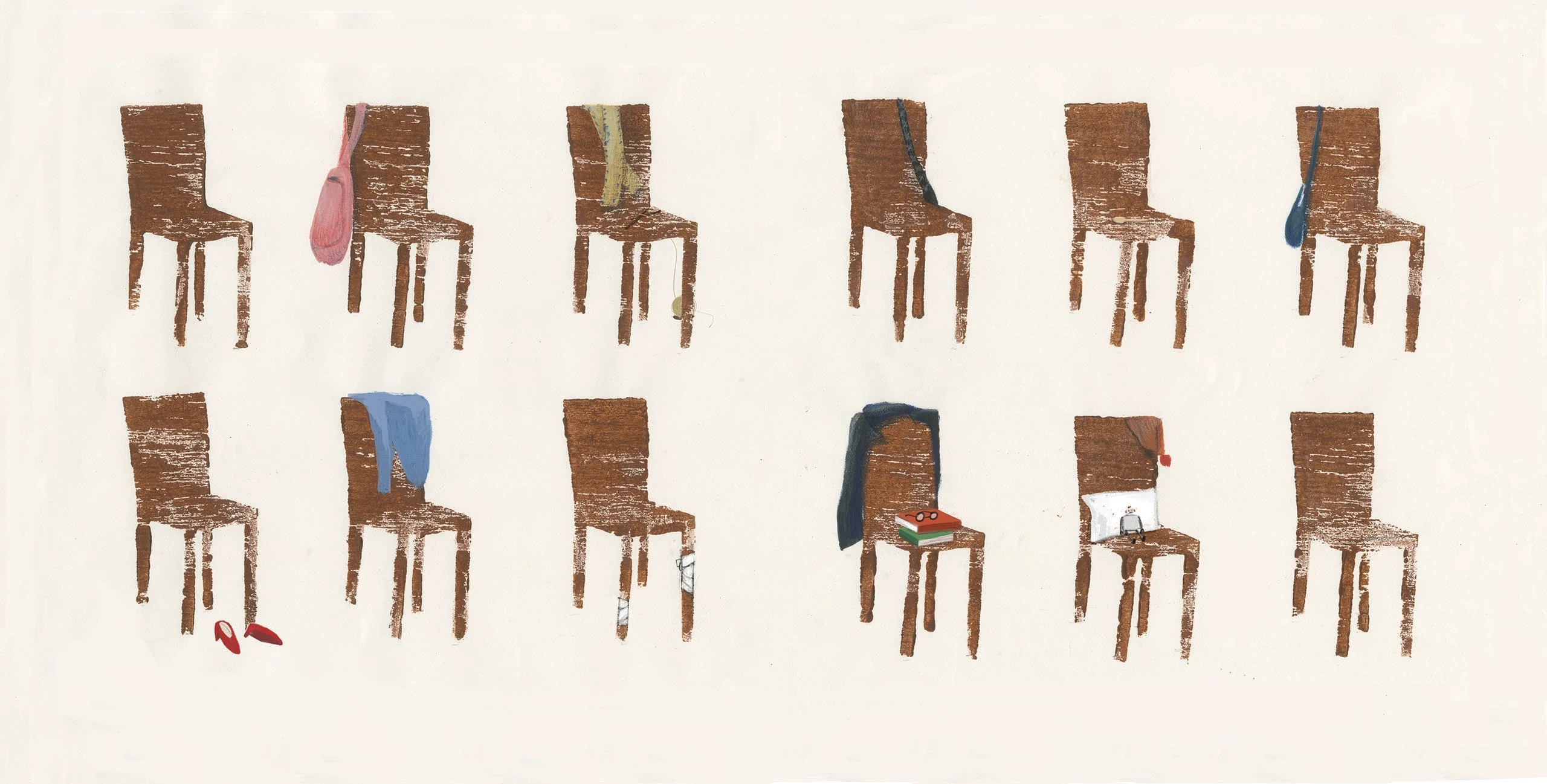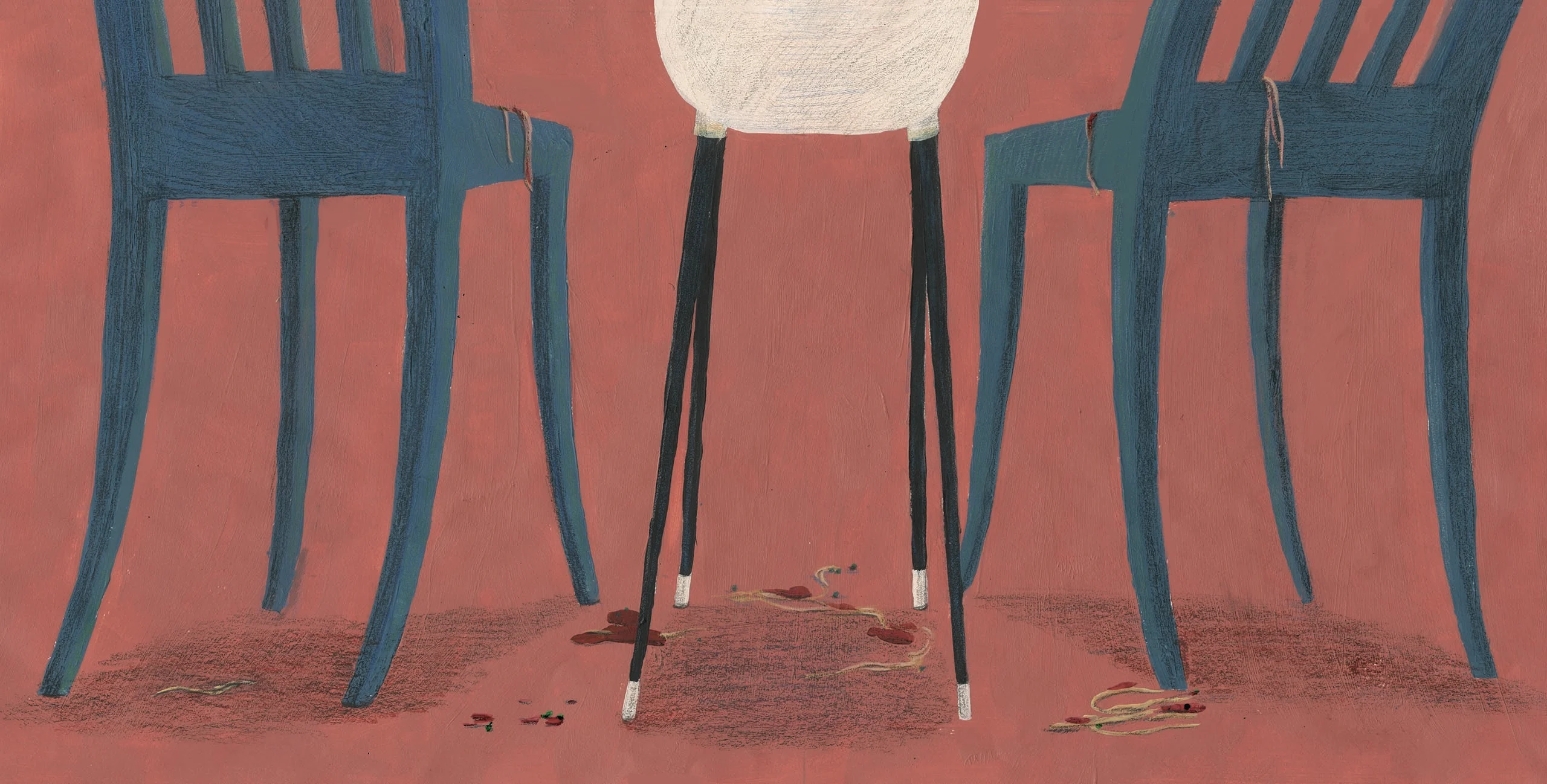
For Taiwanese artist Ivyy Chen, chairs have always signified more than just furniture. They can reflect her mood and her relationships, and even remind her of memories from her childhood. Her new film, Isle of Chair, follows the story of a giant who dedicates his life to picking up fallen chairs and placing them upright again: a commentary on helping those suffering from mental health issues in modern society. Alex Kahl spoke to Ivyy about where this fascination with chairs began, and how they’ve evolved to symbolize so many different things to her.
During a still life art exam at Ivyy Chen’s school in Taiwan, students were given a list of objects and were asked to draw them. One of these objects was a chair. Everyone else drew chairs upright, standing on all four legs, but hers was upside down as if it were falling, spiralling.
Ivyy is the middle child in her family, and so her parents gave her a lot of freedom to make her own decisions. “I just got used to taking full responsibility for my decisions and I learned how to motivate myself,” she says. This reliance on herself meant that she placed high expectations on her work that she felt she wasn’t meeting. This brought on symptoms of anxiety, and the falling chair reflected her mental state, something that had only ever been upright and stable but that gradually became uncertain and unpredictable.
That was the beginning of a long relationship with the chair, an object that she suddenly felt a deep affinity with. “I just wanted to find somewhere I could belong and something I could connect with. The image of the chair came to me and that was it.” Drawing chairs gave Ivyy a way to easily visualize these new, unfamiliar feelings she was having, which helped her to understand them.



Later, when a long-term relationship came to an end while Ivyy was at university, she imagined a chair once again, but in a different way. “That time, the upside-down chair represented someone I missed, because they were no longer sitting on it,” she says. “But I also put it upside down on purpose because I didn’t want anyone else to be sitting there in his place.” As years passed, Ivyy found that chairs could reflect so many things.
They had already represented her mental health and her relationships, and she realized that the more she thought about them, the more meanings she found possibilities for. In 2015, she created an illustrated book, The Chair of Life, which aimed to show the reader every chair they had ever metaphorically sat on. Ivyy believes different types of chairs in different positions can trigger certain things in the viewer’s mind. “A rocking chair might refer to someone who is unstable but also never falls completely, or someone desperate to make a change but never quite able to,” she says.
I choose chairs because I feel they are so close to us and our lives that people aren’t really aware of them.
Where you or I see chairs as, well, furniture, Ivyy does not. “I choose chairs because I feel they are so close to us and our lives that people aren’t really aware of them,” she explains. “They connect with people in different ways. As time passes by, people move from buses to airplanes to school classes to chairs at home, and they can all represent such different things.” From the chair in your bedroom you throw your clothes on at the end of the day to the one that’s associated with a specific family member, we all have relationships with so many chairs that we probably never stop to consider.
Ivyy’s latest exploration of chairs is an animated film, Isle of Chair. In it, a friendly giant explores an island that seems to be deserted, calmly searching for any chairs that have fallen over and placing them upright. There’s no visible people in this world, but the still-steaming cups of tea sitting on the kitchen counter suggest that maybe there were until recently.


Ivyy originally wanted to make a film with no characters, only chairs, but she included the giant to provide interaction. “I was trying to show a world where people are living, but are invisible,” she says. “They live in the worlds that I create, but they are not the main characters. I don’t want to put the focus on people, but on the giant and how he interacts with the chair.” This correlates with one of the reasons Ivyy began fixating on chairs so much in the first place. “I’ve never really been able to draw people,” she says. “I used to try but they all ended up looking like me, so I use chairs to connect more with other people. They make them think of their own personal stories.”
Ivyy’s feelings about her own mental health are represented in this film. She wanted to explore the friends or family in our lives who offer emotional support when we need it most, and the giant represents these people. The tranquil nature of the film is suddenly disrupted when a storm brews and the giant has to fight against the elements to keep his beloved chairs standing upright. “In this moment, he also represents people who want to help you, but don’t really know how,” Ivyy explains.
At first calmly exploring the island, Ivyy’s giant is suddenly thrown into a frantic fight to keep the chairs upright in the storm. He resembles many of us, desperately trying to keep all aspects of our lives firing on all cylinders. When he catches one chair, there’s a feeling of relief, that some stability is possible, but when the final frame of the film shows another chair beginning to tumble, that stability is thrown into question. Ivyy had never considered this reading of the film, but that’s the beauty of her muse being something so ubiquitous as chairs. Just as Ivyy prophesied, “the chairs make people think of their own personal stories.”
As the storm clears and the island returns to its original sense of calm, the giant is left slumped on the floor. As he looks up, he sees a single chair remains upright in the palm of his hand. His eyes soften with relief. “Maybe only by falling can he understand how the chairs felt,” Ivyy says. “Society often seems to believe that it’s not OK to fall down. They celebrate extroverts. But I wanted to celebrate people who go through difficult times, because that’s natural too.”

